Living, Studying, and Working in the Woods of Northern California
Living with the land. Or at least that’s how my mom described my semester. I started out the semester driving across the United States from North Carolina to California with my classmate Lilli (read about our trip here), before staying in the Bay Area for a month. After our time in the Bay waiting out the smoke and fires, we moved up to the home of SNAG Magazine, the NEST Community Arts Center, where we lived, studied, and worked in the woods for 6 weeks.
A Bit About IRIS
IRIS stands for International Research and Internship Semester. This is the semester we have been preparing for my entire Global career – preparing to conduct participant research while working as interns across the globe – in Bali, Vienna, Buenos Aires, and more. The pandemic pretty much tossed the International part of that acronym out the window, and in the Spring, I found myself searching for a new internship and writing a new research proposal.
My research this semester is about the role that art-based organizations play in a time of crisis, or crises, and how they have adapted to be able to address needs. I have spent a lot of time this semester reading literature, conducting interviews, and writing about my experiences and what I’m finding. By early December, I will have a fully fledged research paper that hopefully has some answers about the utility of art during this crazy time.
During IRIS, we also take a full course load. This semester, I’m taking the following courses:
Senior Thesis I
Senior Thesis I is entirely focused on our research paper. We spend each week going over the numerous steps involved in conducting research and writing the paper, from field notes to interviews to writing your findings.
International Internship
So, this class isn’t really international anymore, but it is focused on our internships. We spend class time going over things like professionalism and managing conflict in the workplace, how to craft resumes and cover letters, self care, and more.
Peace & Conflict Studies
I was given the opportunity to take a graduate-level class through UPEACE University, the United Nations university based in Costa Rica, and I jumped at the chance. This nine week course was an introduction to peace and conflict studies, and involved readings, video presentations by our professors, discussion boards and a group project with classmates all over the world, and a research paper on a conflict.
American Sign Language
The school also gave me the opportunity to take an online American Sign Language class online, and I really enjoyed this course. I’ve been interested in learning ASL for quite awhile, and the first level of the online course taught me a good bit of basic sign language.
SNAG Magazine
Seventh Native American Generation (SNAG) Magazine is a magazine that features content exclusively created by Indigenous peoples. The organization was founded by our boss, Ras, in 2002 while he was working with Native American youth in the Bay Area. The kids at the time wanted a magazine through which they could share their art, thoughts, and ambitions, and since they created SNAG, the magazine has focused on Indigenous youth content and the organization has hosted youth art workshops and led trips from Wisconsin to Palestine to Hawaii.
Lilli and I connected with SNAG through their co-director, Julia, who is a Global alum. After some meetings throughout the Spring and Summer, we were all set to work to work with SNAG to help them put out their newest issue in November.


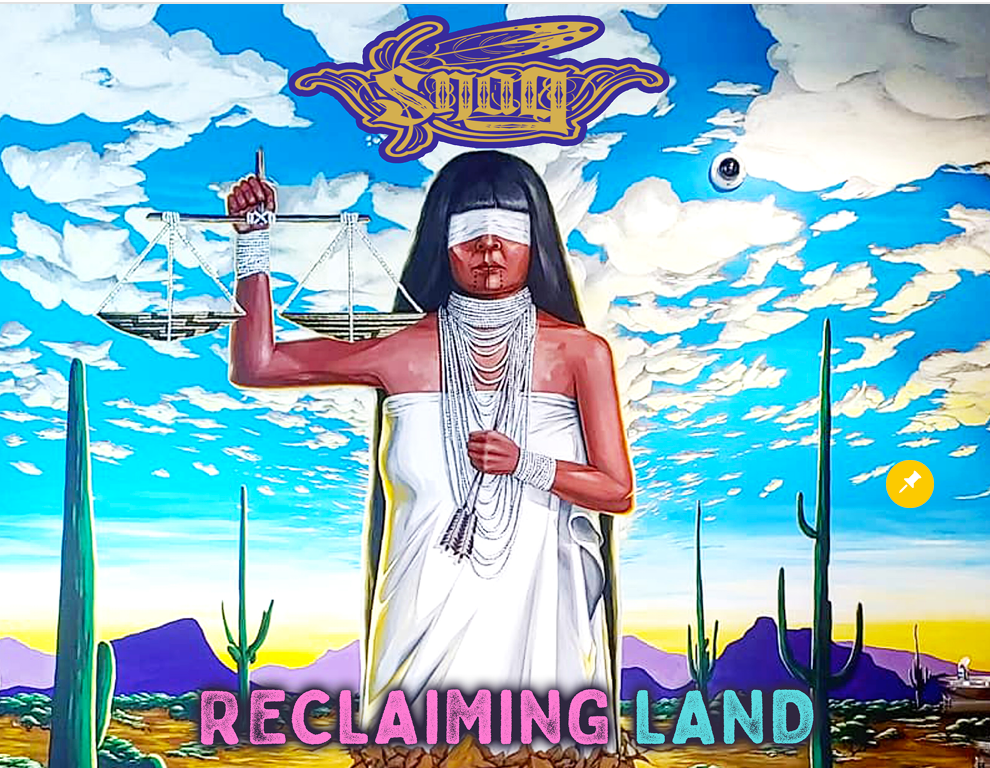
With SNAG, Lilli and I learned to use Illustrator, Photoshop, and InDesign to create the layouts for the magazine pages. We also worked to gather content, help with fundraising, launch and maintain the organization’s Instagram page, and more. We learned a ton, and I absolutely cannot wait for the release of the magazine! On top of our work for SNAG, we also worked on constructing the NEST and worked on helping our boss Julia launch a new company.
Mindful Artistry
Mindful Artistry is the name of the new company that our boss is developing. It’s launching soon, and will provide clients with workshops that include mindfulness and meditation as well as facilitated work sessions. I built the website for Mindful Artistry, gave input on what the company is going to offer and how, and helped Lilli create graphics for the company logo and social media.
About the NEST
Nearly 9 years ago, our boss Ras bought land in Forestville, California, on his tribe’s unceded land. He spent several years preparing the land, and has spent the last three building the first structure with the help of others through community workshops and grassroots funding.
The NEST is the first sustainably built, Indigenous-led community arts center in California, and when completed, it will feature two main buildings that will host the SNAG offices, music and dance studios, a holistic healing space, and artist housing. It will also have a living roof, a water catchment system, a solar power system, and more.
Lilli and I were invited by Ras to live at the NEST throughout the semester so that we could work with SNAG in-person, and we jumped at the opportunity. Our move up to the NEST was delayed by wildfires and evacuations, but we were eventually able to move up there in late September. We thought we would be moving inside the newly finished downstairs of the first building, but when we arrived, the walls still needed to be finishes and painted, and the earthen floors still needed to be installed.
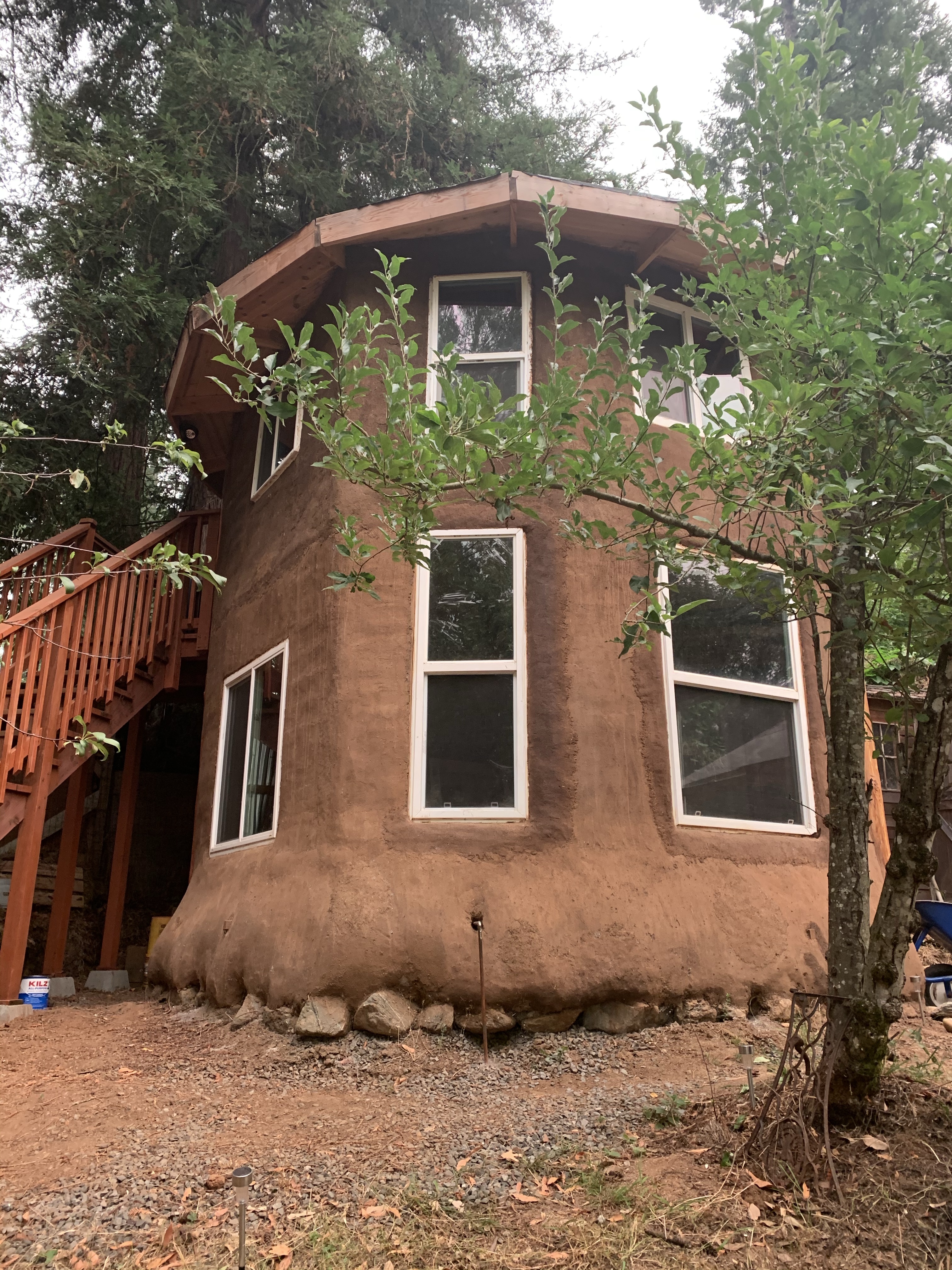
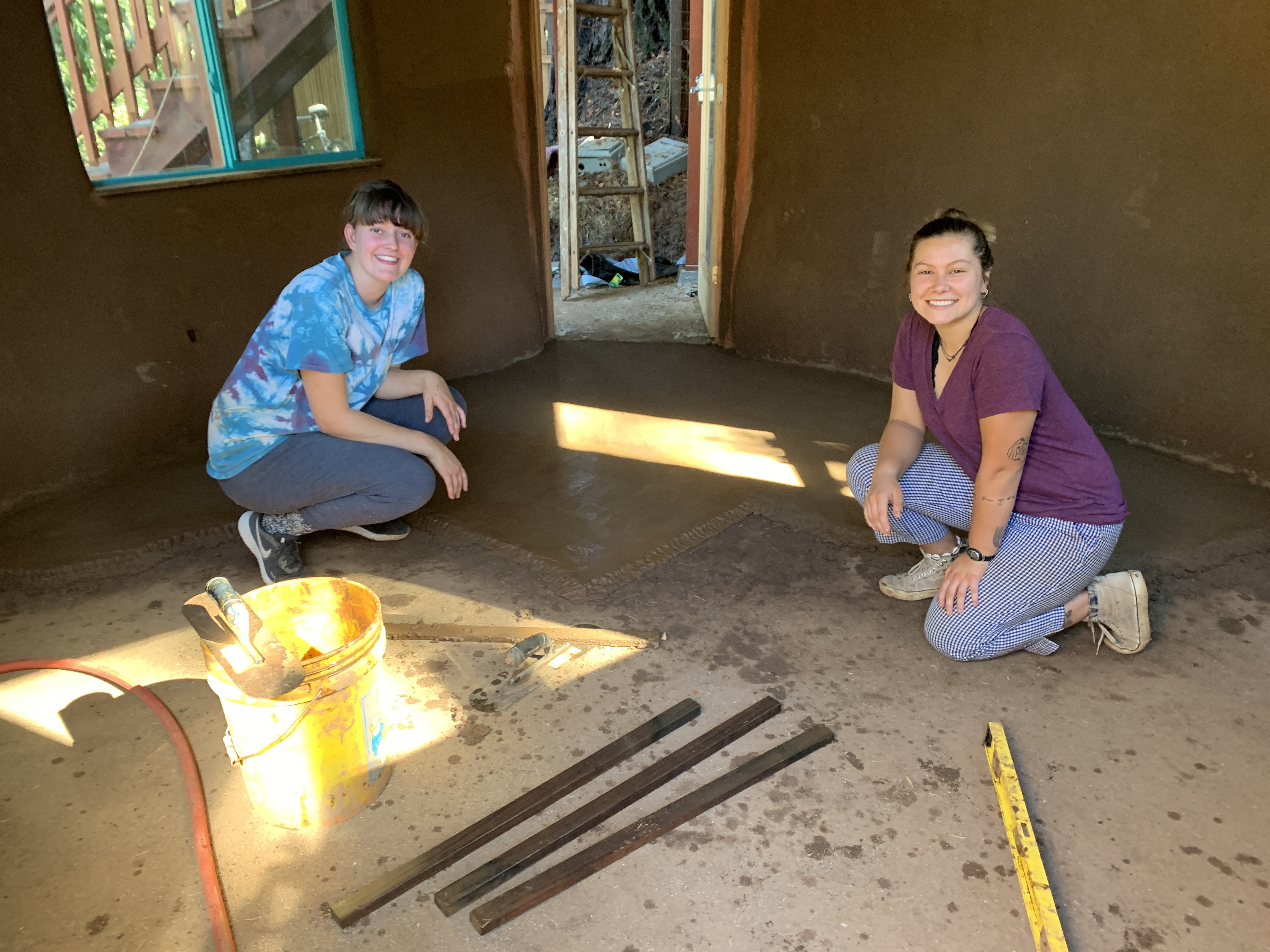
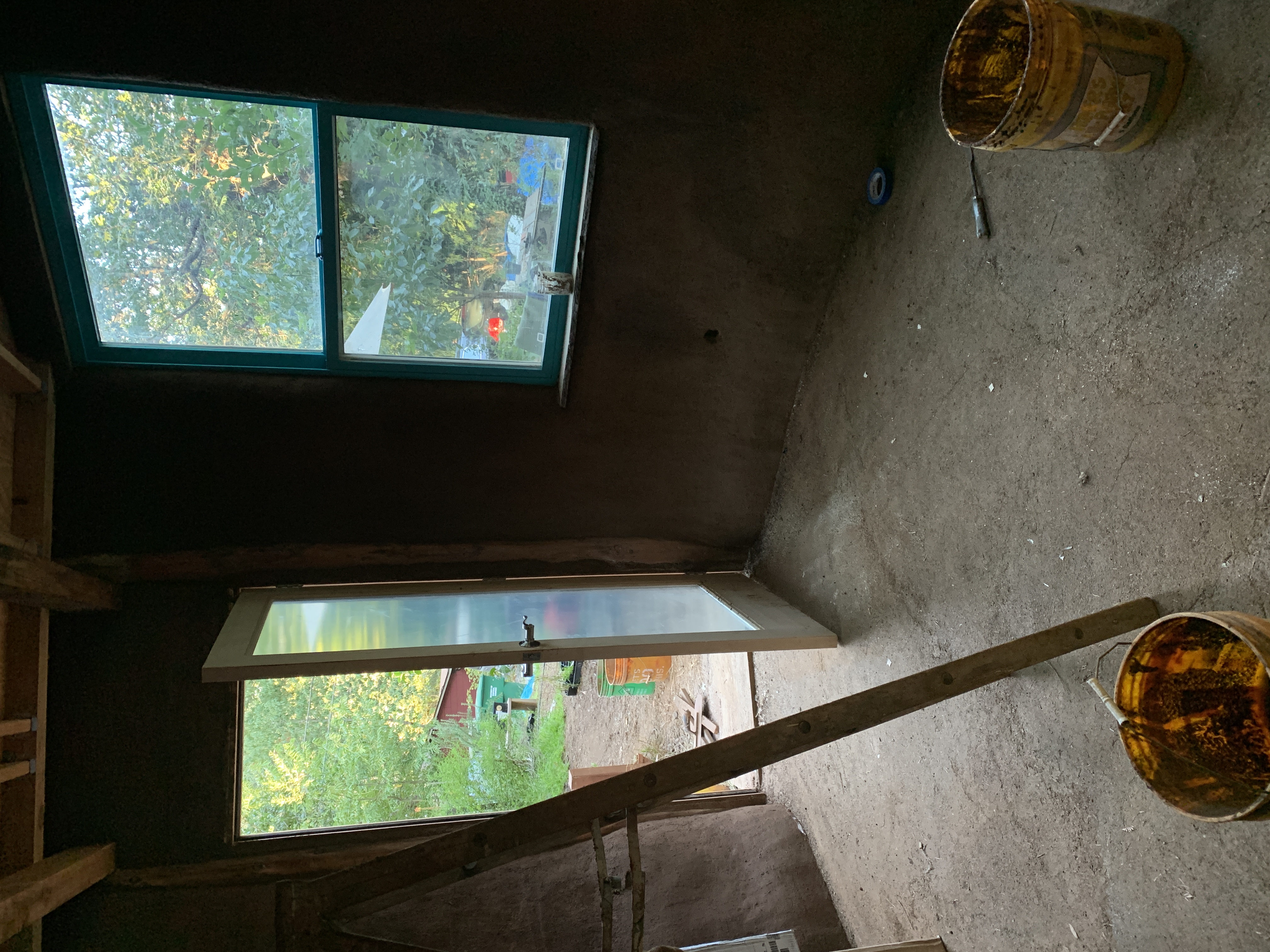
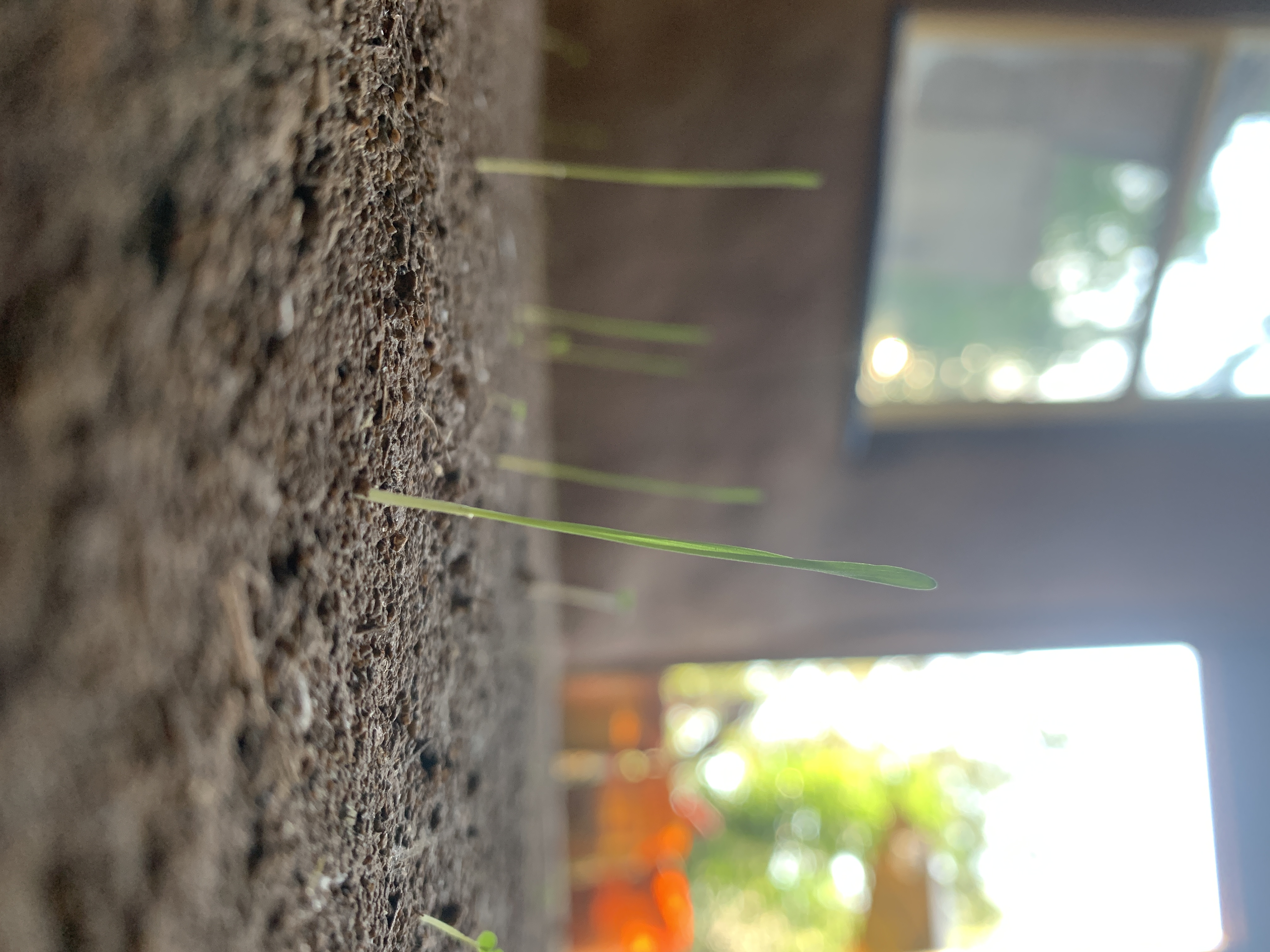
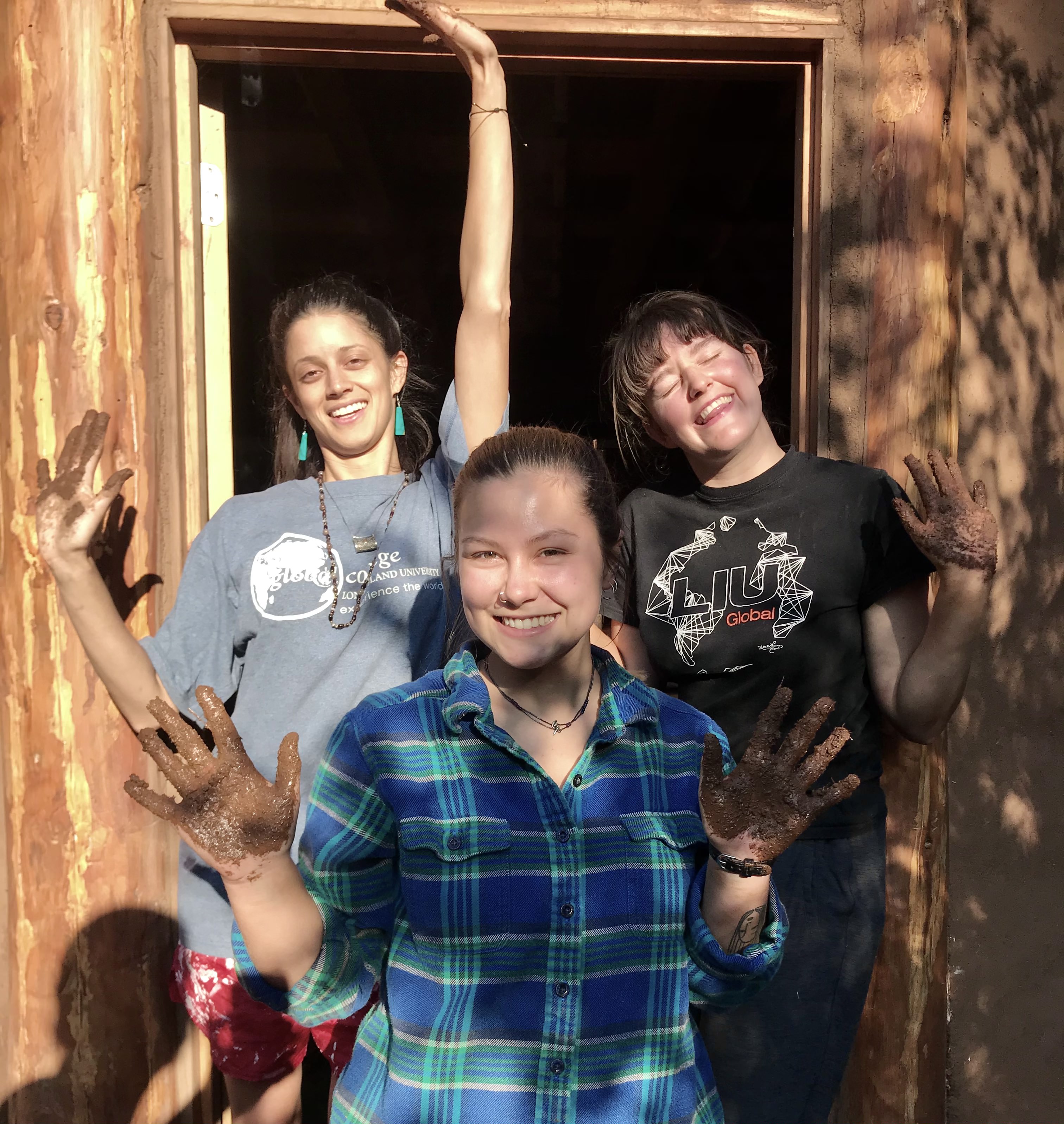
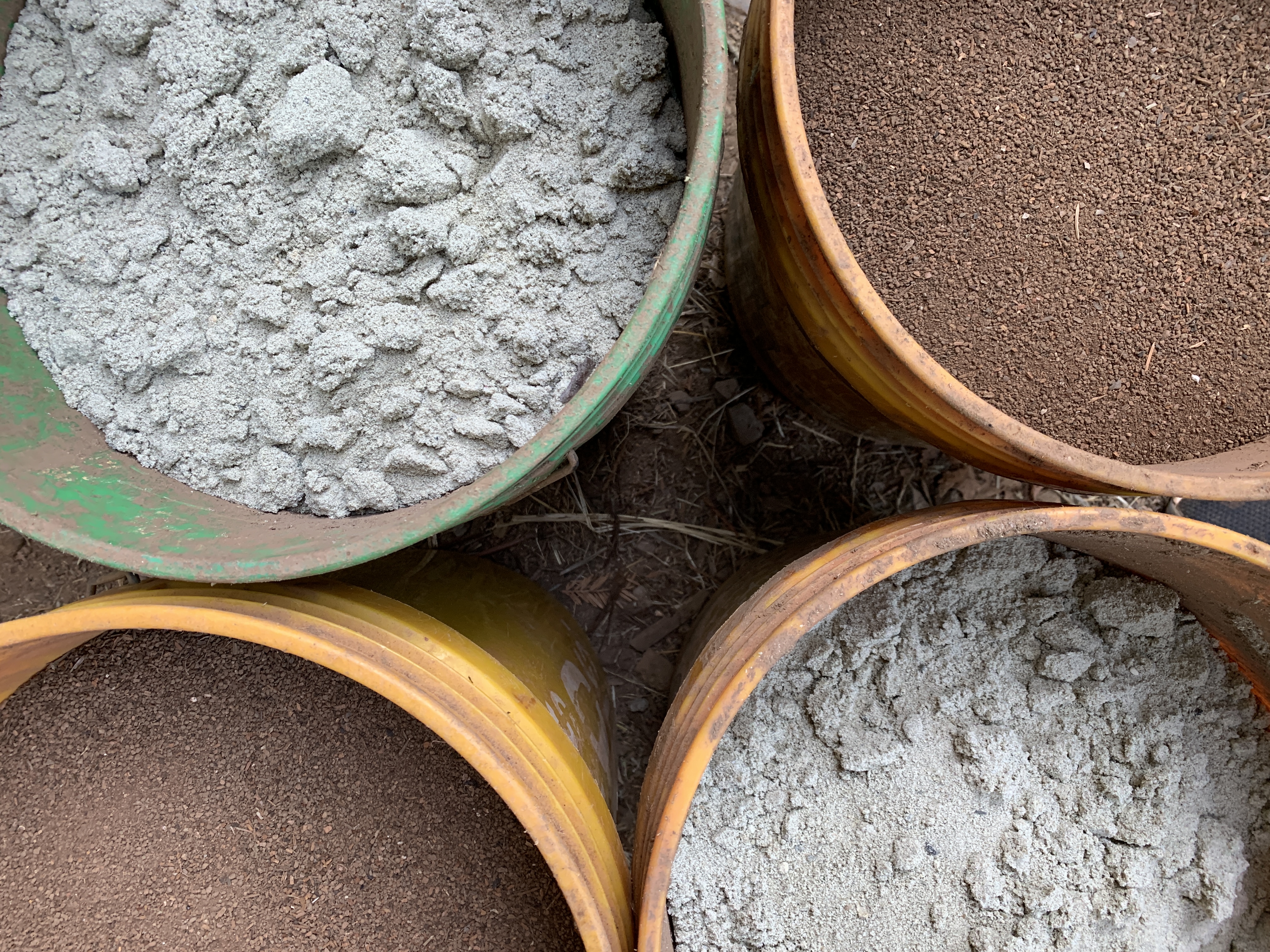
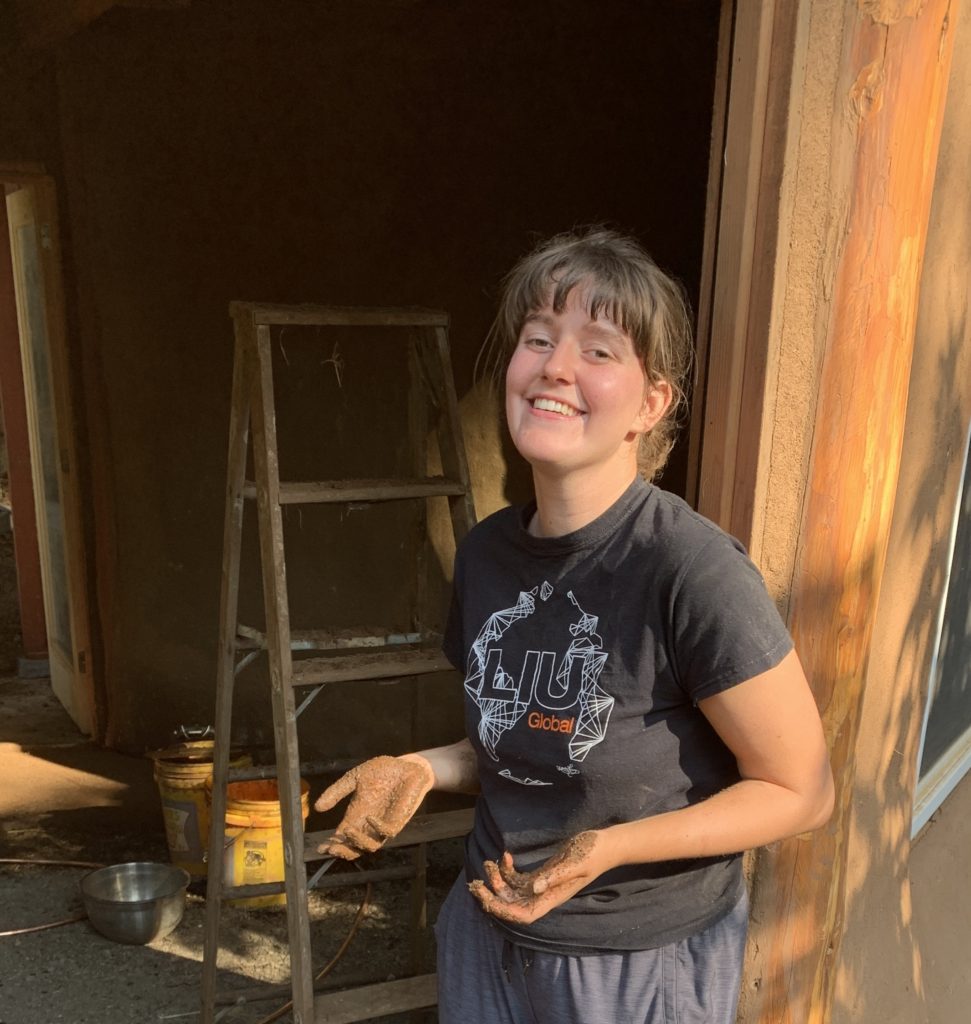
So, throughout our time at the NEST, we learned a great deal about natural building, and we used our newly acquired skills to fill in large sections of the wall, fix cracks in the walls, paint the walls with a clay paint, paint the window frames team, upkeep the garden, and install the earthen floors. It was a lot of hard work and long days of manual labor, but I walked away from the experience likely able to build my own home through natural techniques if I ever want to.
Living at the NEST
So, like I said, Lilli and I thought that when we moved up to the NEST we would be camping and living in a shed for a maximum of about two weeks before moving inside. This…didn’t really happen. While the top floor of the NEST where our boss lives is fully finished, furnished, and warm, the first floor had a ton of work that needed to be done on it before we could live in it, and two weeks quickly turned into six.
Lilli lived in a shed with a queen bed in it and I slept in a tent with a queen mattress in it. It wasn’t too bad when we first arrived, but as the temperatures at night steadily dropped lower and lower, I enjoyed the experience less and less. As the temperatures reached the low forties each night, I bundled myself in a t-shirt, my coat, my UNC sweatshirt, leggings, pajama pants, a winter hat, and two pairs of wool socks. I also laid on top of two blankets and under two blankets and a sleeping bag.
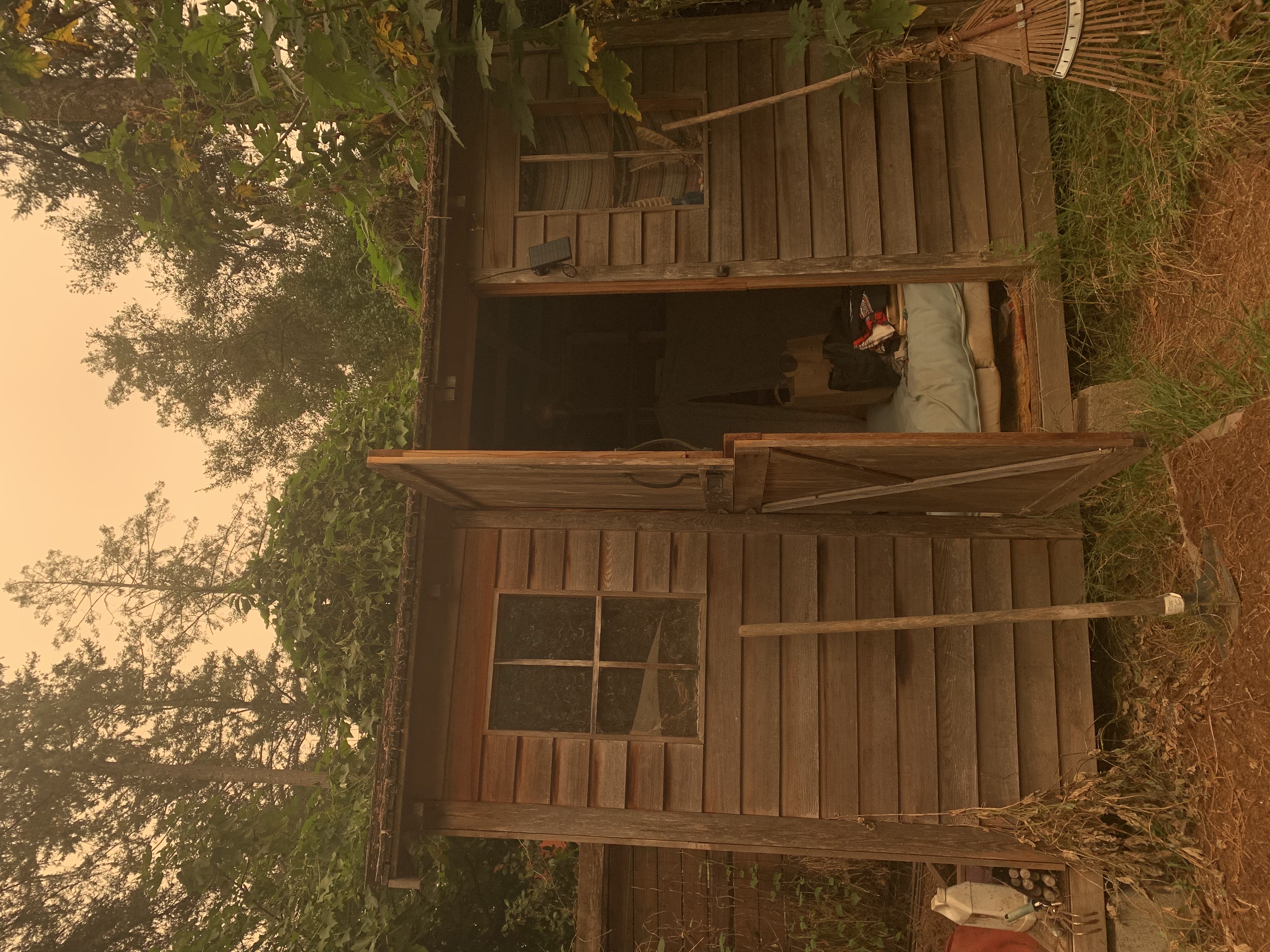


Living at the NEST also meant using a compost toilet and an outdoor shower. The compost toilet is a plastic bucket with a wooden structure and toilet seat built around it. You simply do your business in the bucket, throw away your toilet paper in the nearby trash bin, and put wood shavings into the bucket. When the bucket is full, we would take it out, set it in a spot down a hill to stew for a bit, and then empty one of the other buckets so that it could be put in the bathroom. The bucket had to be dumped onto a compost pile, and boy is this a smelly and not at all enjoyable experience. Fortunately, I only had to do this twice. The outdoor experience was actually pretty nice. It got kinda cold to shower outside when it got cooler outside, but the hot water was so nice after long days of work.
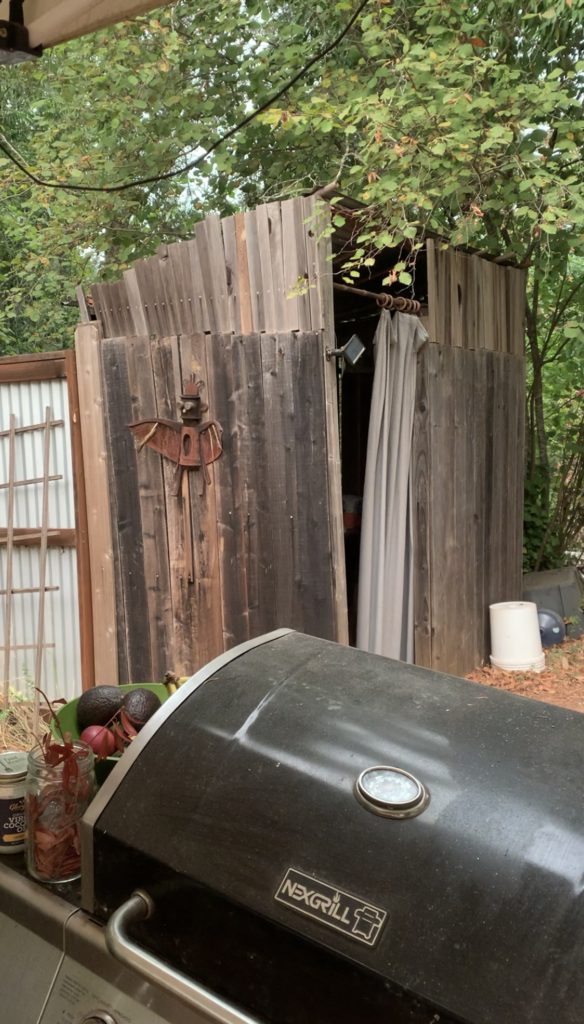
The kitchen at the NEST consisted of a sink with warm water, some counters, a grill, and a camping stove. No fridge, so we used a cooler to keep some things somewhat cool. I really thought going into this that not having a fridge was going to be a challenge, but it really wasn’t a problem at all. We ate oatmeal every morning for breakfast, and ate boxed macaroni, canned soups, and roasted veggie meals with rice or quinoa for our other meals. Our boss also often made delicious breakfast tacos for us.

Furthermore, we had to pay $55 a month for Xfinity wifi so that we could do our online work and attend classes on Zoom, and we got all of our electricity from a battery hooked up to a solar panel. We were able to charge our laptops and phones once a day, and we always did our classes on one laptop to save as much battery life as possible. Due to limited battery life, we turned to things like books and going down the road to the river to stay off of our devices as much as possible. We didn’t have the wifi or battery life for FaceTimes or Netflix, so we focused on enjoying a more unplugged time.
It was definitely exhausting to take a full course load, conduct research, work for three internships – SNAG, the NEST, and Mindful Artistry, AND live outside. Before this semester, I had never camped a day in my life, and now I can say I lived outside for six full weeks. Lilli and I decided to leave the second week of November because we had completed our 200 internship hours, we were exhausted, more people were moving into the space, and the temperatures were about to drop into the 30s at night. So, we packed out bags late one Thursday night, and then sped back across the country in just five days so we could be home asap and not miss any classes.
This semester, I learned a ton, and am so grateful for the experiences I had, but I am also glad to be back home where I can sleep inside on a solid bed, eat refrigerated food, take advantage of less limited electricity, and enjoy solid wifi. I’m excited to wrap up my semester at home in the next couple of weeks, and continue to facilitate the launch of Mindful Artistry, hold a copy of the fully completed 10th issue of SNAG Magazine, and produce a fully fledged research paper!

Caitlin, you are a SURVIVOR!
You make the TV show Survivor look like play time. They don’t know what surviving really means. We are so happy you are home and hope to see you soon.
Nonnie and Pa